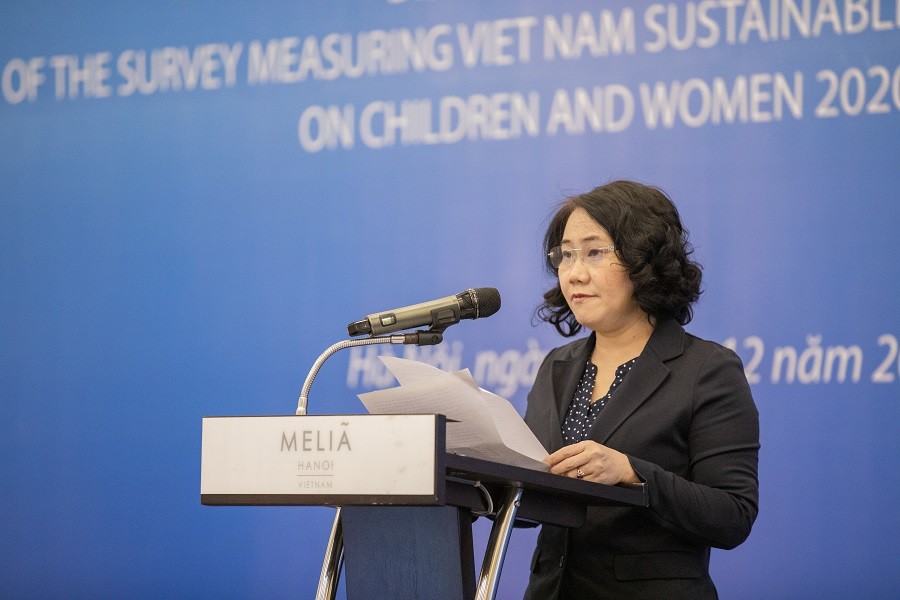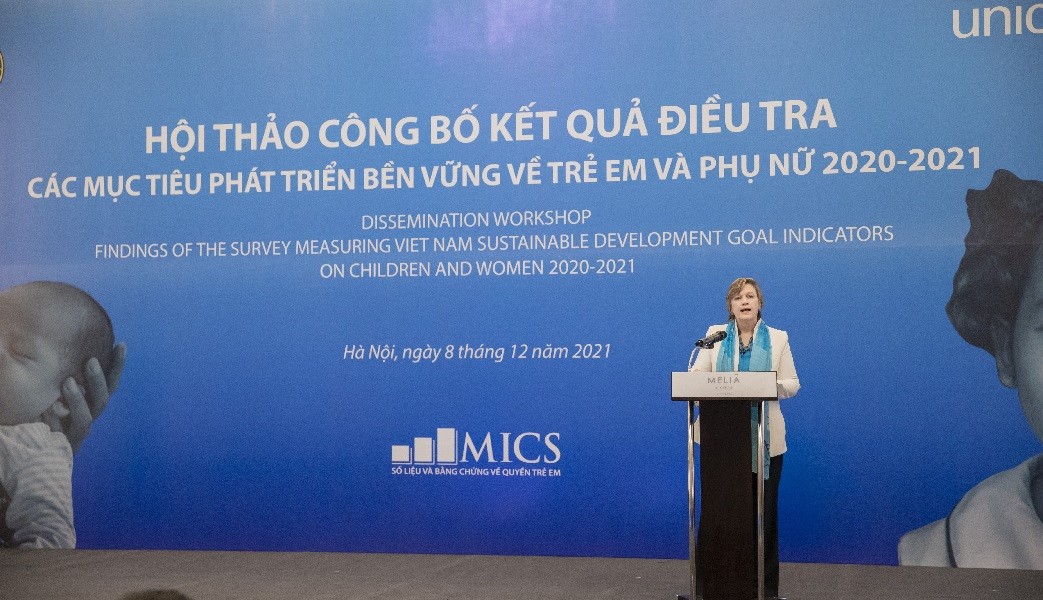
Report on Sustainable development goals indicators on children and women in Viet Nam
Latest
 |
| Dr. Nguyen Thi Huong, Director General of GSO. (Photo: UNICEF) |
The findings were generated from a nation-wide household survey, conducted with the participation of more than 14,000 households, carried out late in 2020 and in early 2021 with leadership of GSO in collaboration with relevant government ministries and with technical and financial support of UNICEF.
In addition, and for the first time, relevant chapters of the Demographic Health Survey were included, with the technical and financial support of the United Nations Population Fund (UNFPA).
The survey was specifically designed to measure Viet Nam’s progress on the Sustainable Development Goal Indicators for Children and Women in Viet Nam (SDGCW), measuring 169 indicators related to women and children, of which 35 are National Sustainable Development Goals (SDGs).
Providing data for several targets that would otherwise be unavailable, the survey is key to monitoring Viet Nam’s progress towards achieving the SDGs and its national targets.
“The results of the SDGCW Viet Nam Survey 2020-2021 reflect a true picture of the lives of children and women across the country”, said Dr. Nguyen Thi Huong, Director General of GSO. “The data generated from the survey are reliable and comparable internationally that allow Viet Nam to have timely evidence to develop policies, programmes, and national development plans, and to monitor progress towards the Sustainable Development Goals (SDGs) and other international commitments".
The SDGCW survey presents a comprehensive picture of all aspects of the lives of children, including issues of reproductive and maternal health of women aged 15-49 years, child nutrition, health, hygiene, education, violence against children, equality, access to the internet and information and communication technology skills.
There are several indicators included for the first time, including access to early childhood education, the quality of household drinking water with a test for E.coli and arsenic levels, cervical cancer and a chapter on men.
The richness of the information in this report comes from the level of disaggregation – by gender, age, ethnic origin, disability, migratory status, geographic location and by wealth quintile. Additional sampling was conducted for ethnic populations as well as in urban areas, providing results that reflected development successes, the unfinished agenda, as well as disparities in the achievement of children’s rights.
The results indicate that the development and well-being of children and women is on track in several areas, needs a rethink in policy and approach in other areas, as well as the need for increased investment to the social sectors to address the challenges identified.
 |
| Ms. Rana Flowers, UNICEF Representative to Viet Nam. (Photo: UNICEF) |
“The disaggregated data is incredibly rich, and extremely useful for us to understand where development approaches are progressing well and where disparities exist that challenge us to ensure that no one is left behind. The value of this report lies in how we now take these findings and adjust the policies and approaches to better reach the children and women at risk of being left behind", said Rana Flowers, UNICEF Representative to Viet Nam.
Ms. Flowers said: "The survey results give us up-to-date information, that factors in some of the early COVID-19 challenges that families have experienced, the burden that women bear and the risks to their lifelong development that children face, including those living in ethnic populations such as Mong or Khmer, those residing in remote and mountainous regions or those living with disabilities”.
“The survey has been innovative, and it will be an essential data source for the achievement of SDGs", said Naomi Kitahara, UNFPA Representative to Viet Nam.
Findings of the Viet Nam SDGCW Survey 2020-2021 enable Viet Nam to better track, report and strengthen evidence-based policy making to fulfill its commitment to SDGs. It is, therefore, a valuable resource for policymakers, as well as programme managers and researchers of multiple sectors in their work towards progressive improvements in the rights and wellbeing of children and women in Viet Nam.
| SDGCW Survey is part of the 6th round of UNICEF’s Global Multiple Indicator Cluster Survey (MICS) Programme, which supports countries in collecting internationally comparable data on a wide range of indicators on the situation of children and women. This is the largest MICS survey to date in Viet Nam, and globally, with a sample of 14,000 households across 700 localities in all 63 provinces of the country, with data representation for six economic regions and two big cities including Ha Noi, Ho Chi Minh city, and for key ethnic minority groups. |




















